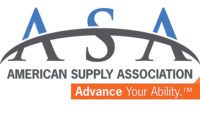March 1 probably was one of the wildest days in an already wild Washington, D.C.
On the preceding evening, the Washington Post broke a news story that the president was set to announce tariffs on steel and aluminum the following day. That’s where the confusion began.
To begin, at the start of the week on Feb. 26, the consensus among D.C. insiders was that the president would be making an announcement in the first full or second week of March. With a special election taking place in the suburbs of Pittsburgh, home to many of America’s remaining steel companies, many believed the president may use this announcement to “get out the vote” for the candidate in his party. But we were wrong!
If the rumors are to be believed, an internal White House meeting on the general issue of trade took place that Wednesday (Feb. 28) and there was no mention, let alone any planning for this looming announcement. Those of us who had only just began working this issue woke up Thursday to the news that while the president had until the end of April to make a decision, it was coming that day!
More rumors persisted, including a report by an “unnamed source” that claimed Commerce Secretary Wilbur Ross and influential trade advisor Peter Navarro had orchestrated the Thursday meeting with executives from leading steel and aluminum companies. This apparently happened without the knowledge or clearance by the White House chief of staff, who customarily clears who and who does not warrant a meeting with the president of the United States.
Because of this ongoing uncertainty, Thursday’s real-time reporting was that the announcement of tariffs would be postponed and the meeting with steel industry leaders would just be a quick grip and grin…until the president spoke up and announced “we’re going to have tariffs of 25% on steel and 10% on aluminum.”
Financial markets began dropping like a rock and users of these items immediately sprang into action. With the slight hope that this was an unofficial announcement, there was a furious 24 hours of issuing statements, calls to action and grassroots letters to the White House asking them to rethink this decision.
While reports and rumors continue to swirl, we can only believe what we’ve heard directly from the president’s mouth, which at times differs from that which is said by his advisors and the final official recommendations that come from his office. Though he’s shown no signs of going easy on an ally like Canada, he said on March 5 that Mexico and Canada could get a reprieve from these tariffs if they were amenable to rewriting the North American Free Trade Agreement or NAFTA.




